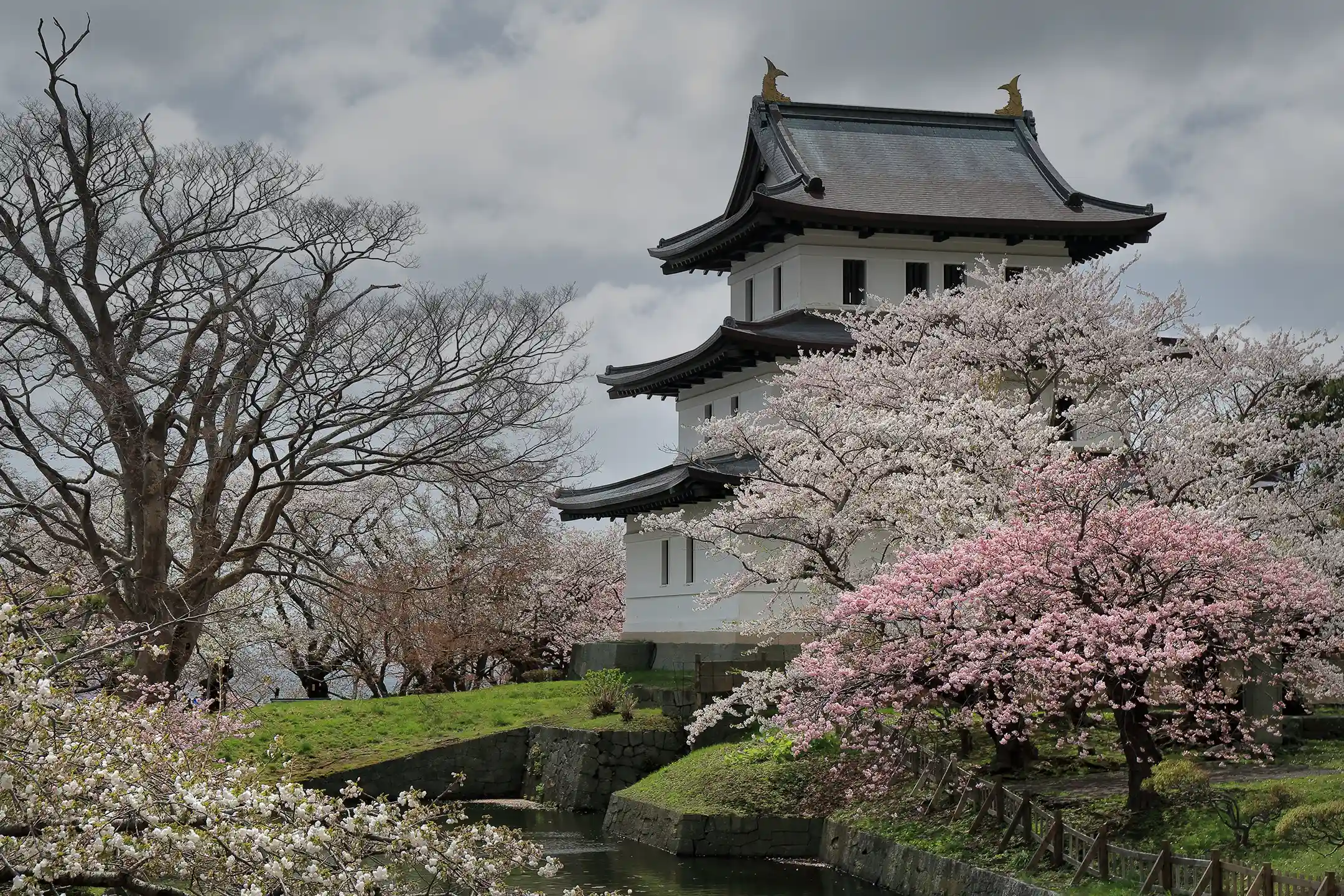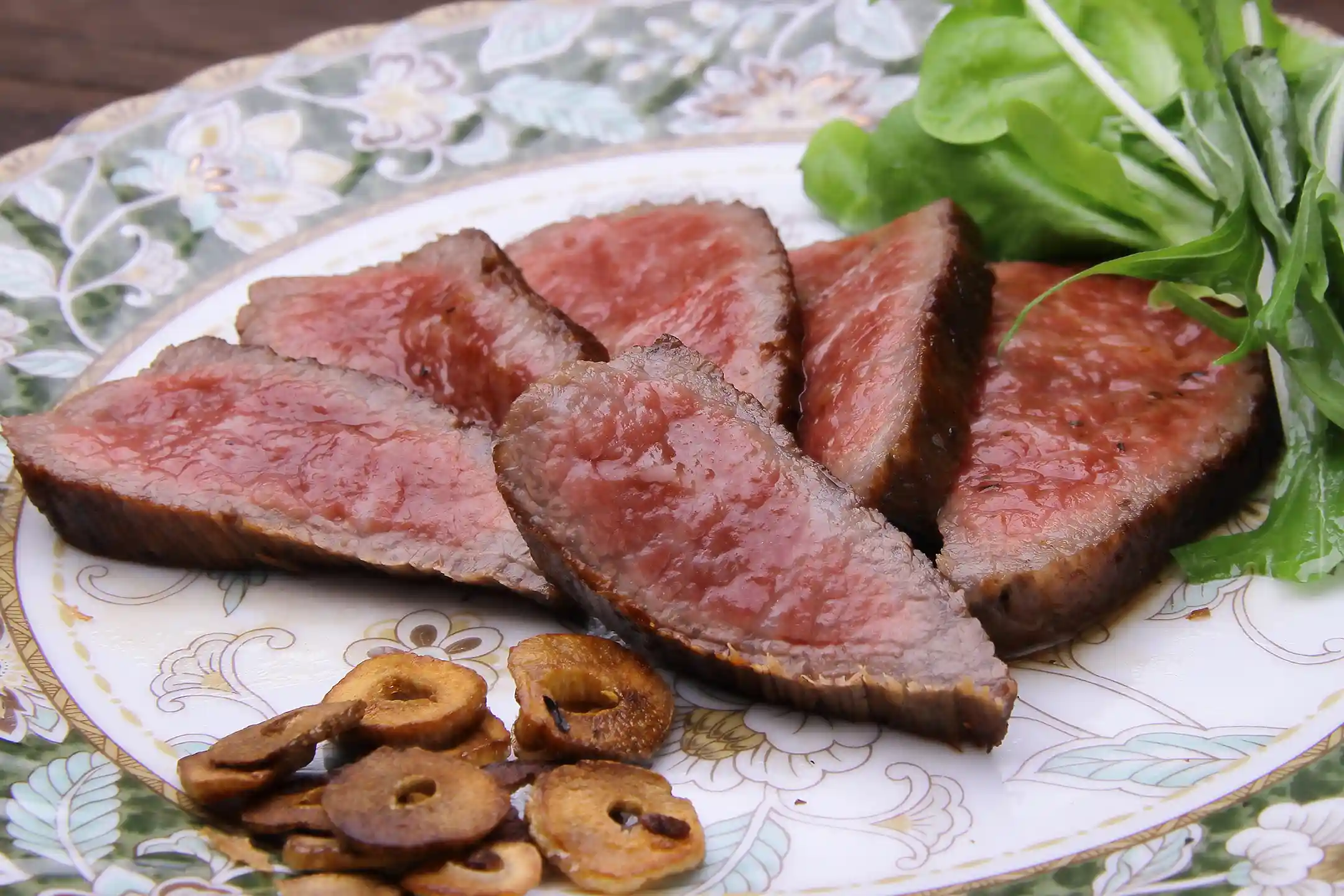Throughout Japan, each region has its own vibrant history shaped by a unique blend of culture and the natural environment. In this article, we invite you on journeys of "learning" and "discovery", traveling from Matsumae in Hokkaido and Kanazawa in Ishikawa to Kyoto and Nagasaki. Along the way, you'll explore multifaceted attractions — including castles, traditional crafts, and contemporary art — that each area offers.
If you're visiting from Europe, America, or elsewhere, some cultural differences may feel overwhelming at first. But as you get to know the local background and the traditions cherished by locals, you might be surprised at how similar they are to your own values. When you experience landscapes shaped by past lifestyles and aesthetic sensibilities, your trip truly transforms into a fascinating cultural exploration filled with fresh discoveries.
Matsumae, Hokkaido: Hidden Historical Beauty and Artistic Journeys
Matsumae, once the only feudal domain in Hokkaido, has a unique history blending samurai traditions from Honshu with the northern region’s culture. While you might normally associate Hokkaido with vast natural landscapes, Matsumae invites you to discover its traditional castles and crafts, which hold great academic and cultural significance. As you explore how Japanese architecture and design adapted to the harsh northern climate, you’ll witness a profound interaction between nature and culture throughout history.
Be sure to explore the cultural heritage and traditional crafts of the Matsumae domain. Here, formal samurai culture mixes with the open-minded spirit of northern Japan, offering you refreshing insights. Walking through the Edo-period streets around Matsumae Castle, you can feel how vibrant and adaptable the region was in the past. At the Matsumae Clan Residence, you can engage with samurai culture and learn about the values embedded in their etiquette and daily life — insights that remain relevant even now.
Matsumae has recently begun applying its traditional craft techniques to contemporary art. You can join pottery and textile workshops to see firsthand how tradition and innovation coexist. These experiences might change your perception that Japanese crafts are outdated or rigid. Moreover, Matsumae Park’s cherry blossom preservation efforts exemplify eco-conscious tourism. You can even participate in conservation activities to form a deeper bond with the region’s nature and culture.
Exploring Historic Design in Matsumae Castle and Castle Town
Matsumae Castle, the northernmost castle built in Japan during the late Edo period, is a unique blend of military strength and elegance, adapted to Hokkaido’s severe climate. As you wander around its stone walls and explore the main gate and keep, you can appreciate the sophisticated balance of fortitude and grace of that era (*1).
In the castle town, samurai residences and tea houses show Japan’s openness even during times of isolation. Contrast the imposing samurai houses with the gentle hospitality of the tea houses, and you'll see that each had a different social and cultural purpose. Joining an expert-guided “design philosophy tour” enriches your understanding of historical aesthetics and lets you appreciate these sites on a level beyond appearances..webp?width=750&height=500&name=Kozenji_(Matsumae%2c_Hokkaido).webp)
Matsumae’s Traditional Performing Arts and Craft Experiences
Matsumae Kagura, a ceremonial performance passed down through generations of priests and local parishioners, vividly expresses the region’s spirituality and festive culture with sacred music and dance (*2). It might seem unfamiliar at first, but learning about the community and spiritual elements behind it can reveal connections across cultures.
Matsumae offers hands-on pottery and lacquerware workshops, where you can interact with artisans and experience history and craft traditions firsthand. Discovering why certain materials are chosen and the ingenious techniques involved gives you a new respect for Japan’s craftsmanship. These experiences link history to personal discovery, leaving you with fresh insights and a deeper appreciation of the region.
Kanazawa, Ishikawa: City of Traditional Crafts and Contemporary Art
Kanazawa flourished during the Kaga Domain era, nurturing a refined culture known as “Kaga Hyakumangoku,” renowned for its arts and crafts. At first glance, the bold, vibrant colors of Kutani pottery and Kaga Yuzen textiles stand out. But behind that beauty lie centuries of dedication and the spiritual devotion of artisans. Learning about this long legacy of passion helps you appreciate the deeper meanings woven into these crafts.
In recent years, places like the 21st Century Museum of Contemporary Art (*1) have helped Kanazawa embrace its history while welcoming new artistic influences. This city seamlessly blends meticulous Japanese aesthetics with international sensibilities. Paired with the seasonal beauty of Kenrokuen Garden (*2), this mix of old and new enriches your artistic perspective.%20made%20from%20Kutani%20Ware%20in%20Kanazawa.webp?width=750&height=500&name=Lucky%20Cat%20(Maneki%20Neko)%20made%20from%20Kutani%20Ware%20in%20Kanazawa.webp)
Historic quarters like the Higashi Chaya District and the old samurai neighborhoods vividly showcase traditional craftsmanship and architecture. Meanwhile, Kanazawa’s refined culinary culture — from elegant wagashi sweets to rich Kaga cuisine — still thrives. Exploring these facets lets you delve into the inspirations behind Japan’s celebrated aesthetics.
Architectural and Artistic Fusion at the 21st Century Museum of Contemporary Art, Kanazawa
The 21st Century Museum of Contemporary Art in Kanazawa, designed by Kazuyo Sejima and Ryue Nishizawa, is a work of art in itself. The museum’s circular design and glass walls merge outside scenery with the exhibition spaces, creating a fluid experience between art and daily life (*3). The open atmosphere encourages you to enjoy art up close.
A guided tour provides deeper insight into the museum’s concept of connecting people and society through art, enhancing your appreciation far beyond a casual visit.
Kanazawa Craft Workshops and Cultural Experiences
Kanazawa offers engaging workshops where you can try traditional crafts like Kutani pottery or Kaga Yuzen dyeing. These hands-on sessions deepen your appreciation for the rich colors and local history infused in each piece. As artisans explain how they’ve adapted their crafts over time, you’ll see traditional techniques in a new light — not as relics of the past, but as evolving forms of creativity.
Small-group seminars even let you talk directly with these passionate artisans. Hearing their personal stories firsthand gives you a profound appreciation for their craft. Experiences like these become special memories that connect you deeply with Kanazawa’s heritage.
Kyoto Historical & Cultural Areas: Experience Refined Aesthetics and Cultural Enrichment
Since ancient times, Kyoto has been a center of court culture, temples, and shrines, fostering diverse fields of learning and the arts. Even today, Kyoto is what many imagine as “authentically Japanese.” Encounters with Zen temples, tea ceremonies, or tranquil gardens here can transform your trip from mere sightseeing into a chance for personal growth. Even as Kyoto carries on its ancient traditions, it embraces innovation — for example, many accommodations now offer electric vehicle charging, blending heritage with cutting-edge technology.
Kyoto offers specialized lectures and workshops on garden design, the tea ceremony, and more. Strolling through a garden with an expert guide, you might find yourself wondering, “Why are these stones placed here?” or “What meaning lies behind the carefully choreographed gestures in a tea ceremony?”
Such experiences may help you discover a connection between the now-familiar concept of “mindfulness” and Japan's traditional practices.
Exploring Kyoto’s Zen Temples: Cultivate Your Spirituality and Aesthetic Sense
Kyoto’s Zen Buddhist temples are famous for their dry rock gardens (karesansui) — minimalist arrangements of rocks and gravel symbolically representing nature. The philosophy behind these gardens emphasizes empty space, infusing meaning into what might seem like a simple layout (*1).
These gardens can seem abstract at first. However, if you join a meditation session (zazen) or try sutra-copying (shakyo) at one of these temples, you’ll discover deeper insights. Activities like these highlight the value of looking at things from multiple perspectives and the importance of inner calm.
Special seminars by temple experts delve into history and spirituality while offering practical tips for daily life. For example, fully appreciating a single cup of tea amid a busy day can become a moment of mindfulness that soothes your mind and enhances creativity. In this way, visiting Kyoto’s Zen temples may reveal a new side of yourself — a personal discovery that's part of Kyoto's unique charm.
Immersive Cultural and Culinary Experiences in Kyoto’s Gion Area
Gion, Kyoto’s historic district of refined restaurants (ryotei) and teahouses (ochaya), is an iconic center of traditional performing arts in Japan. Kaiseki is a multi-course dining experience that honors the seasons, carefully selecting ingredients and arranging dishes to reflect nature’s subtle changes. It’s a feast for both your eyes and your palate. Kaiseki might seem exclusive or intimidating, but a guided tour provides the background and history to make it much more approachable (*2).
For instance, you might spend an evening with maiko (apprentice geisha) and geiko (geisha), or visit artisan studios to watch traditional crafts being made. These experiences spark questions such as, “Why is such meticulous attention paid to every detail?” Learning the reasons behind these time-honored practices helps you understand the meaning behind Japan’s meticulous attention to detail and subtle communication. These insights not only make great travel stories, but might also inspire you to reflect on your own values.
Nagasaki Historical & Cultural Areas: A Fusion of Exotic Charm and Traditional Culture
Nagasaki has long prospered as Japan’s hub of foreign trade with the West and Asia. This history shaped a cityscape where multiple cultures and architectural styles blend seamlessly. As you explore, you might even wonder, “Is this really Japan?” when you see European-style mansions and churches. At the same time, traditional Japanese architecture and performing arts remain deeply rooted, creating a city that truly exemplifies multicultural coexistence (*1).
A guided tour of Nagasaki’s Western-style mansions and churches is an excellent way to learn how and why these European influences took root (*2). With local guides providing context, you'll go beyond admiring these buildings at face value and gain a deeper understanding of their role in international history and local society. Nagasaki is also promoting sustainable tourism — for example, encouraging electric vehicle use (3) — to ensure these cultural sites can be enjoyed responsibly for future generations.
Nagasaki’s Western-Style Mansions: Architectural Beauty Brimming with Exotic Charm
The Glover Garden mansions, built in the Meiji period, are classic examples of Japanese–Western fusion architecture. They feature British-inspired columns and verandas adapted to suit Japan’s climate and lifestyle (*1). Far from mere imitations, each building was thoughtfully modified for local needs, showing how flexibly the people of Nagasaki embraced foreign influences.
On an expert-led tour, you can learn about the motivations and international connections behind these mansions. You’ll hear how residents balanced an enthusiastic embrace of foreign ideas with local reactions and resistance. These stories make it clear that each building is truly a “living witness to history,” with layers of meaning waiting to be discovered.
Nagasaki’s Traditional Crafts Workshops and Cultural Exchange Experiences
Nagasaki’s appeal isn’t limited to architecture. After touring the mansions, explore its creative side through hands-on craft workshops, such as its distinctive embroidery or glassware. These sessions show how local artisans blended foreign techniques with Japan’s delicate aesthetics, proving that cultural fusion can create entirely new art forms (*2).
In these workshops, you won’t just watch — you’ll join the conversation. The artisans share their perspectives and explain the origins of their materials and techniques. Rather than leaving with a pretty souvenir, you’ll experience the richness that comes from this cross-cultural interaction. Hearing the stories behind each creation also makes holding your finished piece much more meaningful.
Final Thoughts on Exploring Japan’s Historical and Cultural Areas
Across Japan’s historical and cultural regions, different eras and traditions intertwine to shape each experience. The open samurai culture of Matsumae in Hokkaido; the blend of traditional crafts and contemporary art in Kanazawa; the harmony of spirituality and modern technology in Kyoto; and the multicultural heritage of Nagasaki — all offer surprising perspectives and may even resonate with your own values.
Travel with an appreciation for history, technology, sustainability, and cultural context, and each experience becomes more vivid and meaningful. Moments spent with local artisans and cultural experts can inspire a lasting respect and curiosity that remain long after your journey. With these insights, you’re ready to immerse yourself in Japan’s tapestry of tradition and innovation, deepening your own “cultural exploration.”
Author Bio





.webp)
.webp)